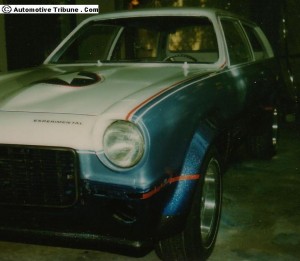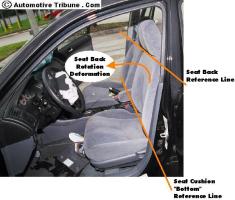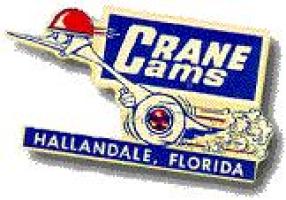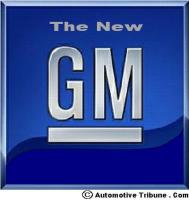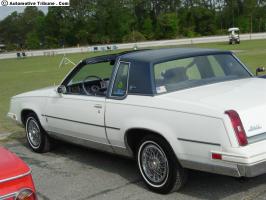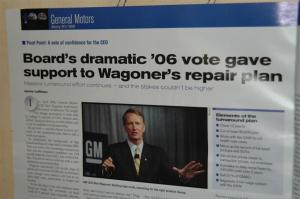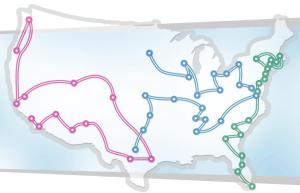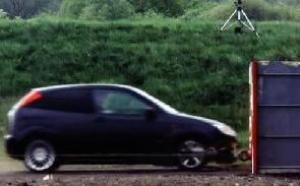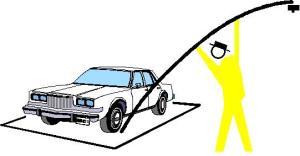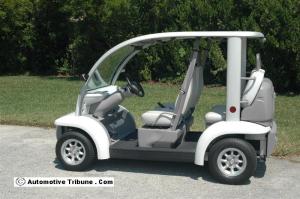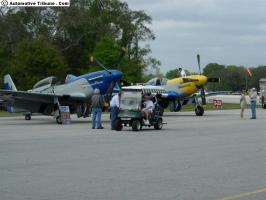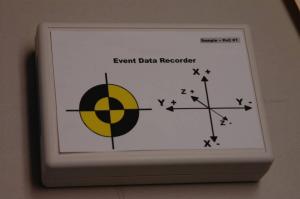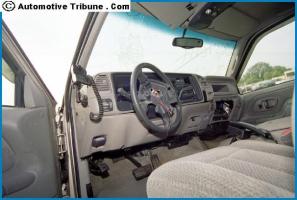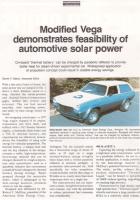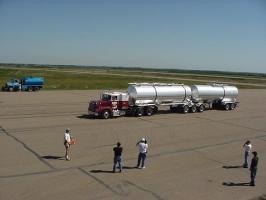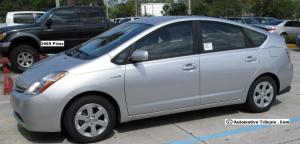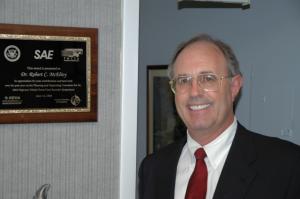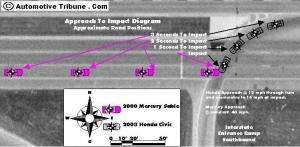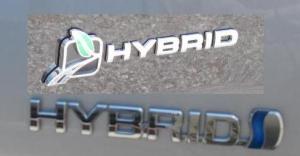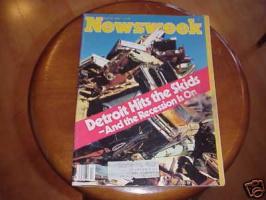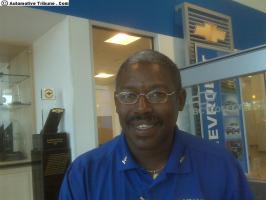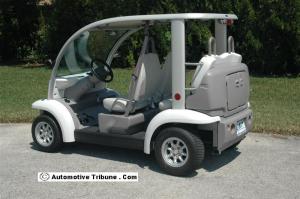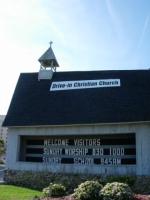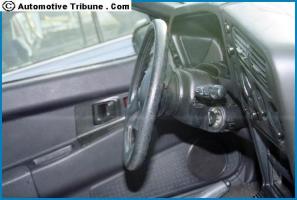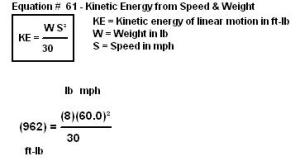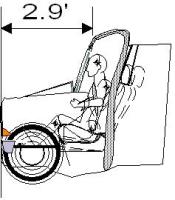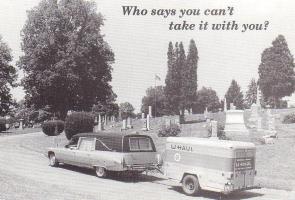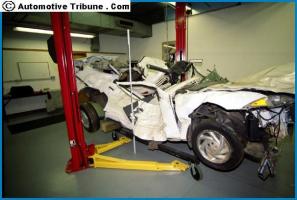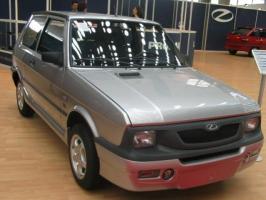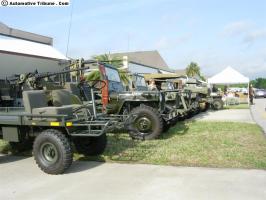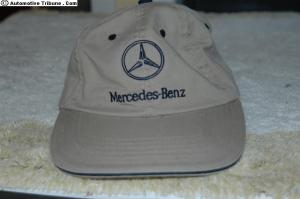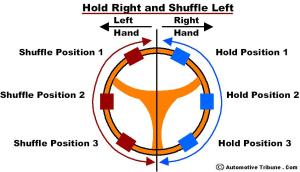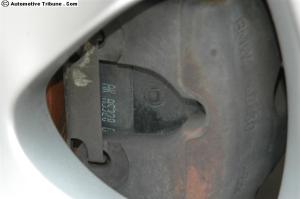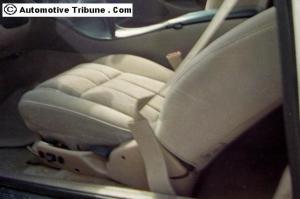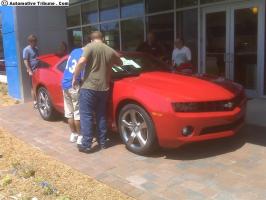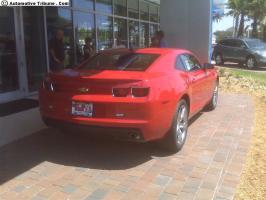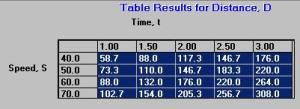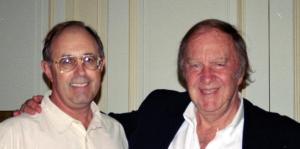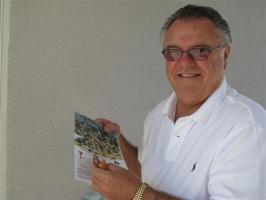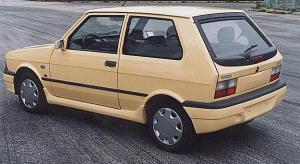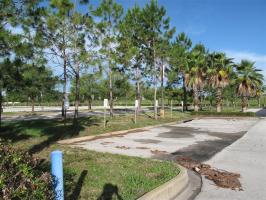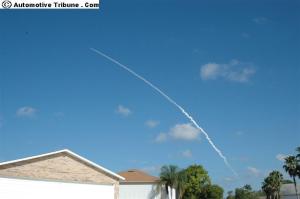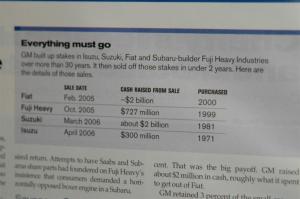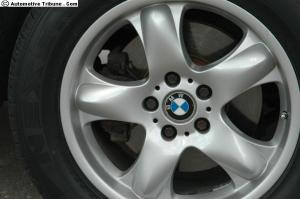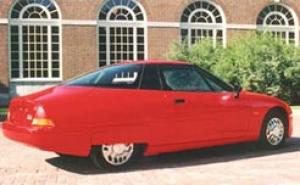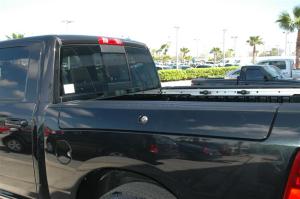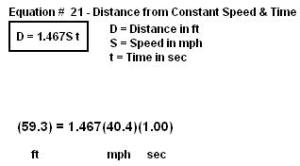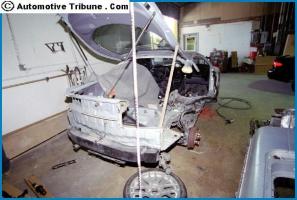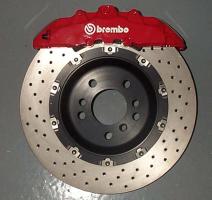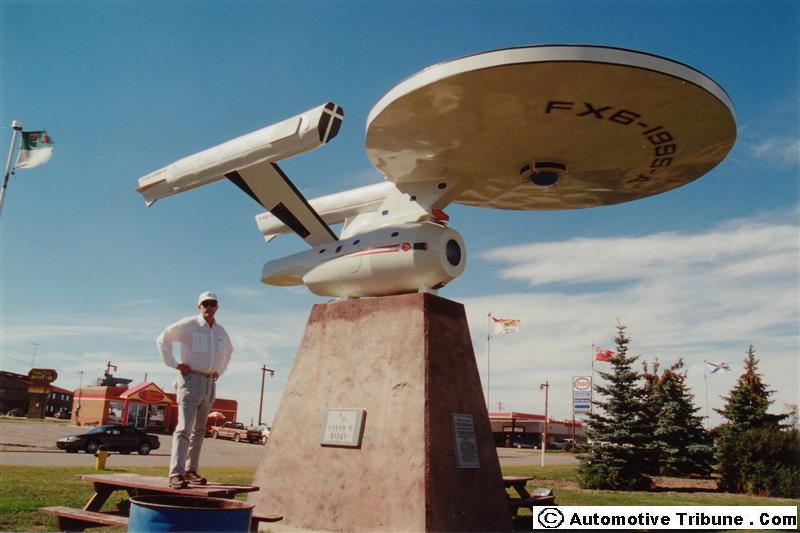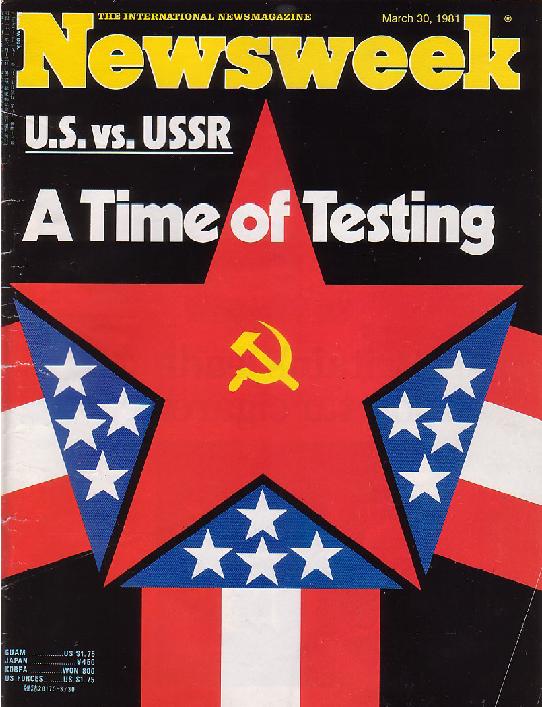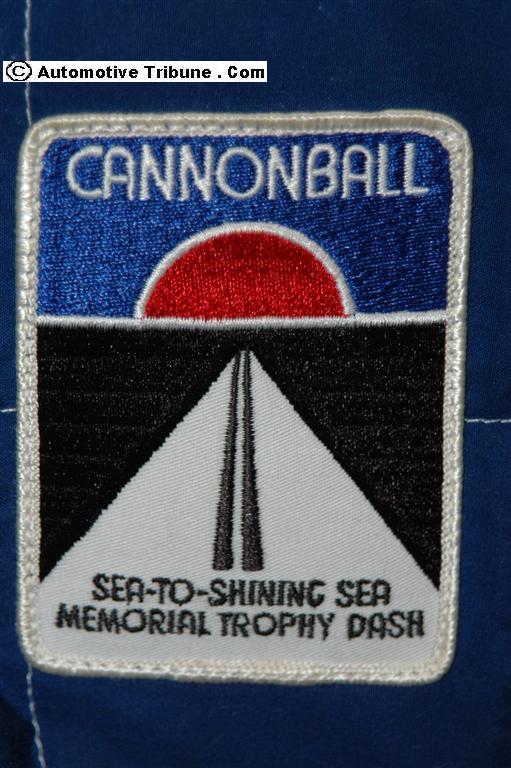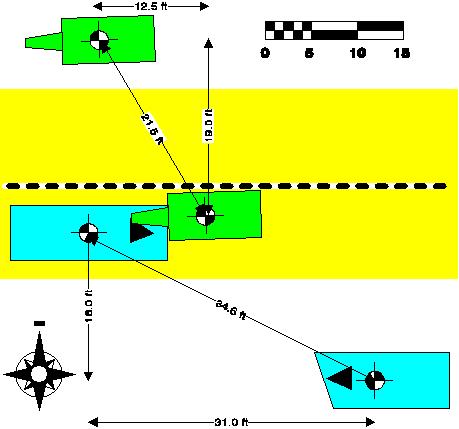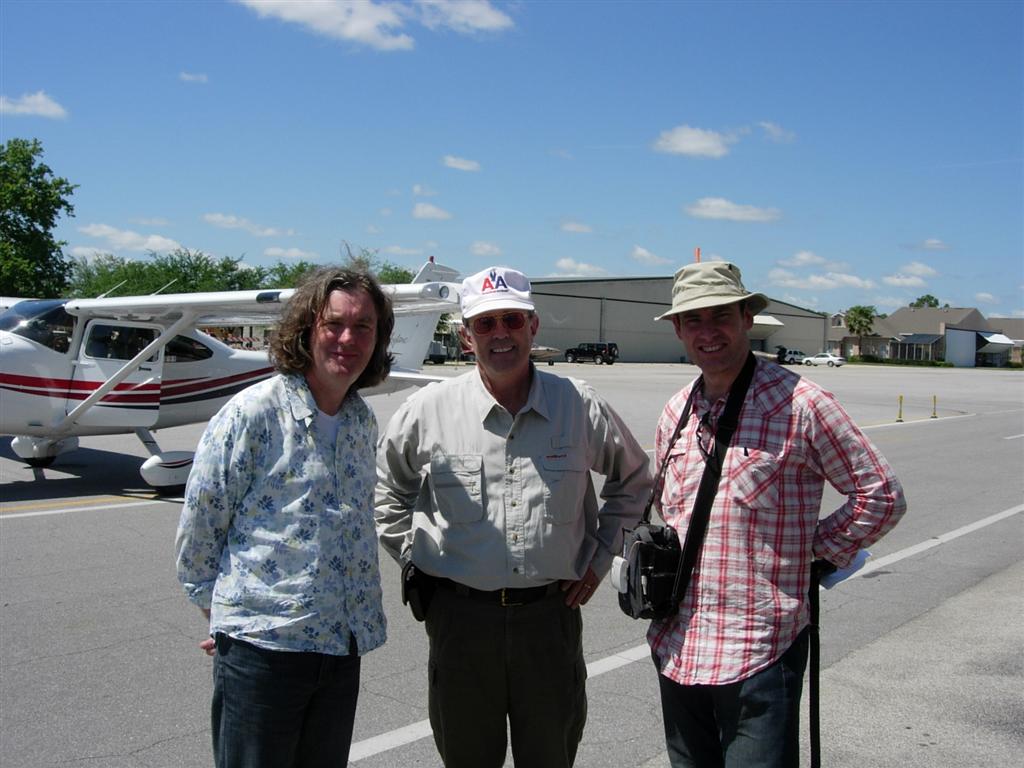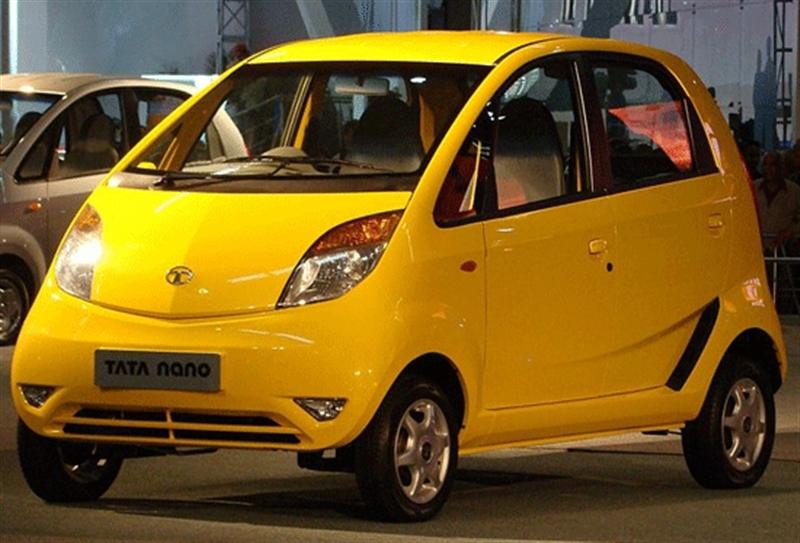Why a Solar-Thermal Car?
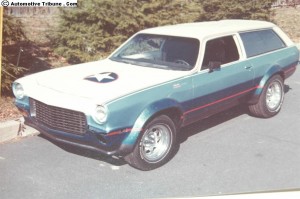
1981 Press Release Photo
It did not start out that way. Discussion for the Solar-Thermal car came during the Patent process in 1980. It went something like Dr. McElroy, because of the high energy density you can achieve in the Thermal Battery you could conceivably patent this as a fuel. If you had a fuel could you build a vehicle? My reply was I never thought about it, but I will look into the idea. That statement was life altering.
History and Background
Rather than addressing the technology right from the start let’s go back to the fundamentals for this unique vehicle, its technology and story behind its design, construction, testing and operation. With this information in place we will move into politics, publicity, funding, and the phases of death for the Solar-Thermal Hybrid Automobile.
Every emotion in the book can be associated with the Solar-Thermal Hybrid Automobile. A project of this magnitude, with its publicity and media coverage taught everyone involved courage, humility, and perseverance. This project has had a life-long impact on everyone involved.
 In 1981 the Solar-Thermal Hybrid Automobile went on display at the 8th Energy Technology Conference and Exposition at the Sheraton Washington, D.C. Hotel. This car represents the only Solar-Thermal Hybrid Automobile ever built.
In 1981 the Solar-Thermal Hybrid Automobile went on display at the 8th Energy Technology Conference and Exposition at the Sheraton Washington, D.C. Hotel. This car represents the only Solar-Thermal Hybrid Automobile ever built.
Today, almost 30 years later, there appear to be no other alternative-energy thermal-powered automobile assembled. This is for good reason, the technology does not readily lend itself to powering automobiles. It works elegantly to heat & cool homes, provide process heat, and provide electricity.
The Energy Conference was the first public outing for the Solar-Thermal Hybrid Automobile. We made the front page of the Business Section of the Washington Star. As reported in the Washington Star on March 10, 1981 American Solar Energy Corporation of Arlington is displaying a small station wagon powered by a solar thermal fuel system. The automobile sports the inaugural license plate NOGAS.
Oil Embargoes

March 30, 1981 -- Page 3 Article "The Stanley Steamer Goes Solar"
In 1967 the US experienced its first Oil Embargo
or the 1967 Oil Embargo. In retrospect, this should be called the First Arab Oil Embargo.
In 1973-74 the US experienced the Second Oil Embargo. This Second Arab Oil Embargo which is typically referred to as the Arab Oil Embargo.
Looking back, it is interesting to note that the energy crisis that occurred in 1973 was particularly significant, in a number of ways. It definitely started the US to think about energy issues that were not considered beforehand. Here is a summarization for the 25th Anniversary of the 1973 Oil Embargo. It puts many issues into perspective.
In 1979 there was another Energy Crisis . This 1979 Energy Crisis also led to economic turmoil and recession.
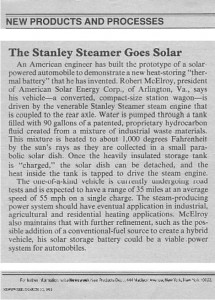 Reflecting on these repeated supply and demand problems in the Nation’s fuel supply revealed that the US, and all industrialized nations were being controlled to some degree by Foreign fuel suppliers.
Reflecting on these repeated supply and demand problems in the Nation’s fuel supply revealed that the US, and all industrialized nations were being controlled to some degree by Foreign fuel suppliers.
An interesting summary, When The Gas Ran Out, brings key issues associated wit these difficult years together.
Recognizing the massive energy problems facing the US was not too difficult. You had the opportunity to live with gas lines or No Gas (later to be used for the license plate of the Solar Thermal Hybrid Automobile).
This was not a good situation. At times it was risky to take any trip by car because you might not be able to get gas.
Next Step

Energy Today at Louisville, KY, October 11, 1981. Event promoter Everett Hurd in the world's only Solar-Thermal vehicle.
After departing the Texas Transportation Institute School For High Performance Driving, a previous article in the Tribune, I read in the Wall Street Journal that the US was going to spend lots of money to re-insulate homes. This fact made it clear that being in the Insulation Business and Home Improvement Business would be just the right place to make money from a major trend that what was going to happen.
Insul-Aid Insulation Company was co-founded with Alan Maurer. We had a great business and soon had some 30 people working for us. Alan was an architect who worked with other architects that were coming up with high-tech innovative ways to cut energy use and energy loss in the new designs. Insul-Aid was always in the news as a partner in special projects.
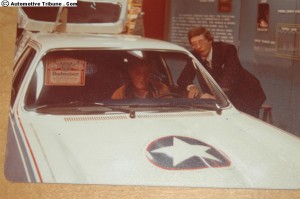
Automobile racing team member sizes up the Solar-Thermal Car. At right is Vice-President of American Solar, Richard Kubis.
The company quickly expanded from walls and ceiling insulation systems to any other insulation system you could imagine. If the customer needed the product, we would make it happen. Expansion rapidly brought us into energy efficient doors, windows, solar screens, ceiling fans, wood stoves, passive & active ventilation systems, and many other products.
1979 Graduation
In 1979 I finished my academic work at Texas A&M and was faced witha very serious decision after Commencement. Continue to work with Insul-Aid, and my car business, or find a new challenge.
After several days, I decided to tackle the energy crisis. It came down to a focus that said, everything in solar up to this point had delivered only modest powe output. If solar was ever going to be a viable alternative energy then someone had to figure out a way to make solar power a reality.
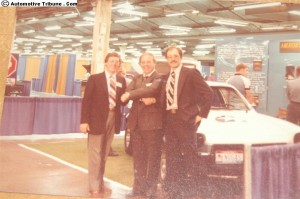
(L to R) R. Kubis, E. Hurd, Dr. R. McElroy. Mr. Hurd offers his congratulations to American Solar on being the Feature Attraction of the Energy Today Exposition.
Review of Solar Literature
No small task, but up to that time things had worked fairly successfully for me. I spent months at the Texas A&M University library reading solar and power materials in an attempt to get an engineering understanding of what made solar efficient and what properties made solar inefficient.
After completing the review of literature and coming up with a basic mathematical model for how a system could work then I was faced with the problme of how do you build it?
Having a great idea is just that. For the idea and concept to be useful and implementable for society the idea must be turned into physical reality. I moved back to Arlington, VA and continued to search for the final pieces of the technology puzzle. While reviewing engineering tables on physical properties of heat and thermal transfer my attention was drawn to a particular type of wax. It had high specific heat, high specific gravity, and had a very large temperature range that it would remain fluid.
Information Error Leads To Success
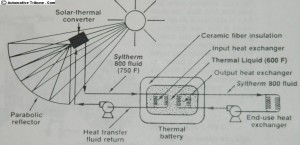
Heat flow diagram
There was an error in the specific information in the manual but I had found the ideal material for a Thermal Battery. Many thermal batteries are molten salt. The system I developed did not use salts, in an effort to eliminate the corrosive effects. In addition to the fact that established functional parameters for he system supported use of the wax product in the Thermal Battery.
Patent Application
I wrote up the initial patent application and sent it to the Patent Office at Crystal City, just a few miles from where I was located in Arlington. Reviewers at the Patent Office communicated that this was a Novel idea but the final preparation needed to be completed by a Patent Attorney.
In the process of working with the Patent Attorney it went something like Dr. McElroy, because of the high energy density you can achieve in the Thermal Battery you could conceivably patent this as a fuel. If you had a fuel could you build a vehicle? My reply was I never thought about it, but I will look into the idea. That statement was life altering.

